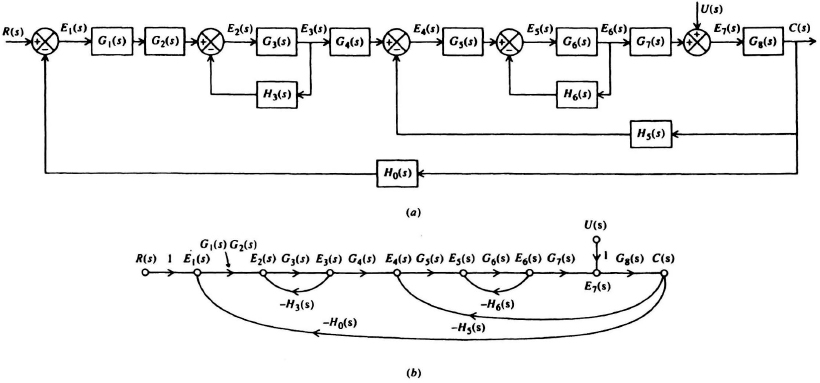2.18. OPERATIONAL AMPLIFIERS [9]
Operational amplifiers, usually referred to as “op amps,” are very commonly used in control systems for performing differencing of signals, integration, amplifying signals in sensor circuits, and in filters used for compensation. The fundamental component of an operational amplifier is a high gain dc voltage amplifier. By appropriately choosing the input and feedback impedances, any desired analog computer characteristic can be obtained easily. These devices are of relatively high gain in the range of 105 to 107. Due to these high gains, the drift problems associated with dc amplifiers are greatly magnified. To minimize the drift, highly regulated power supplies, temperature-compensated precision resistors, and feedback techniques are designed into each dc amplifier.

Figure 2.19. A feedback control system containing lour feedback paths, an input, R(s), and a disturbance input, U(s). (a) The block diagram. (b) The signal-flow graph.
Let us consider the basic operational amplifier circuit illustrated in Figure 2.20. It consists of an input circuit impedance, Zi, a feedback impedance, Zf, and the input impedance of the dc amplifier, Zg. The open-loop gain of the amplifier is assumed to be K. The gain of the feedback circuit, eo/ei, can be obtained from the following set of equations:
Solving Eq. (2.136) and (2.137) for ii and if, respectively, ...
Get Modern Control System Theory and Design, 2nd Edition now with the O’Reilly learning platform.
O’Reilly members experience books, live events, courses curated by job role, and more from O’Reilly and nearly 200 top publishers.

